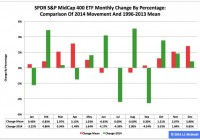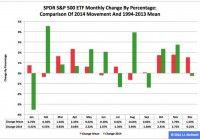TrimTabs Plans 2 Free-Cash-Flow ETFs
TrimTabs ETF Trust has recently filed a post-effective amendment for two ETFs – one focusing on the domestic market and the other on international markets. The funds – TrimTabs International Free-Cash-Flow ETF and TrimTabs U.S. Free-Cash-Flow ETF – are expected to trade under the tickers FCFI and FCFD following their launch. Below, we have highlighted some of the details about the ETFs for investors seeking to know more about these in-registration funds: FCFI in Focus As per the SEC filing , the proposed passively managed ETF looks to provide exposure to international companies poised for rapid growth by tracking the performance of the TrimTabs International Free-Cash-Flow Index before fees and expenses. For this purpose, the index focuses on companies with high free cash flow yield, including REITs. Free cash flow here refers to the total cash generated by the company after spending the money required to maintain or expand its operations, while free cash flow yield is the ratio of a company’s free cash flow to its market capitalization. The index follows an equal weighted strategy which ensures a well-diversified portfolio. Moreover, the index seeks to provide exposure to 10 countries, including Australia, Canada, China, France, Germany, Japan, Korea, the Netherlands, Switzerland and the U.K. The fund will charge 69 basis points as fees. FCFD in Focus The proposed fund looks to track the performance of the TrimTabs U.S. Free-Cash-Flow Index, before fees and expenses. The passively managed fund focuses solely on U.S. companies, including REITs, having a high free cash flow yield. FCFD in short follows the same strategy as FCFI and also charges the same fees, but with a domestic focus. How Might it Fit in a Portfolio? Free cash flow is one of the important tools to measure the performance of a company. Usually most investors focus on fundamental indicators such as the price-to-earnings ratio (P/E), book value, price-to-book (P/B) and the PEG ratio to select companies with strong fundamentals. They often ignore free cash flow measures. However, the free cash flow yield offers a better representation of the company’s performance and in most cases give a fairer picture of the company than other fundamental measures. FCFI and FCFD, which focus on companies with high cash flow yield, are expected to hold some of the best performing international and domestic companies, respectively. ETF Competition Presently, there aren’t many funds focusing on this space. However, we have two funds from Cambria – one focused on the domestic space and the other on the international front – providing exposure to companies that generate high free cash flow and in turn look to return these to shareholders in the form of cash dividends, share repurchases, or by reducing their leverage. Cambria Shareholder Yield ETF (NYSEARCA: SYLD ) with an asset base of $218 million is based on the research that free cash flow is a key predictor of a company’s strength. This product invests in companies that show strong characteristics in returning free cash flow to their shareholders by way of cash dividends, share repurchases, or by reducing their leverage. The actively managed fund has a diversified portfolio of 104 stocks and charges 59 basis points as fees. Cambria Foreign Shareholder Yield ETF (NYSEARCA: FYLD ) on the other hand also works on the same proposition as SYLD, but focuses on stocks from foreign developed countries. The fund manages an asset base of $62.4 million and includes companies with the best combination of dividend payments and net stock buybacks. The fund charges the same fee as SYLD. Thus, FCFI and FCFD, if launched, have a fair chance of building assets for themselves, given the lack of competition in the space.

